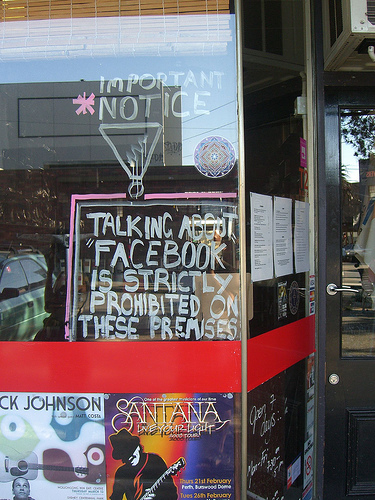The third of the Economist’s online debates is on the proposition that “social networking technologies will bring large [positive] changes to educational methods, in and out of the classroom”. Martin posted this comment:
In some ways the argument is irrelevant – it’s like asking ‘is alcohol beneficial to study?’ You could argue either way, but regardless of what we think students are going to use it anyway. But, that aside, let’s look at what SNS offer – a sense of community, peer support, enthusiastic users, engagement with technology, resource sharing, democratic participation – hmm, these are all things we’ve been desperate to have in higher education for years. We’ve largely failed in many of these (as anyone who uses a VLE can attest), so why wouldn’t we look at what happens in SNs? It would be remiss of us not to do so. However, there are some _big_ cultural issues that higher ed will need to get over – in particular HE is based on a very hierarchical model, and is often obsessed with controlling the student experience. In a social network you have to let go. In short you have to accept bottom up over top down – and that will be tough, as it goes against 3000 years of educational instinct. So, my conclusion – of course higher education should try and adopt principles of social networks and 2.0, but the question is whether it _can_. My two-pennyworth was: Technology is not the key factor in any of this. Many years ago Seymour Papert believed that putting computers into primary schools would revolutionise learning and education. It didn’t — mainly because giving pupils the capacity to engage in computer-mediated exploratory learning would have undermined the authority of teachers and made schools more ‘difficult’ to manage. So the school system asserted control over the technology and placed it in roped-off spaces called ‘ICT Rooms’ or the like, and Papert’s hoped-for revolution didn’t happen. There’s an analogy here for social networking. It’s intrinsically non-hierarchical and largely uncontrollable. It’s therefore a poor fit with our hierarchical and tightly-controlled educational institutions — at every level from kindergarten to university. Social networking could conceivably have beneficial effects in education — but only > > If the social structures implicit in our educational system adapt to accept it. This same tension between institutional control and technological potential is evident in the way learning resources, including worksheets, have been integrated into education. Rather than leveraging technology to foster independent, exploratory learning, many schools have opted to digitize traditional materials without fundamentally rethinking how they engage students. The real challenge isn’t the availability of technology but the willingness of educational structures to embrace more flexible, student-centered approaches. Until institutions prioritize adaptability over rigid control, innovation in educational materials will remain surface-level rather than transformative.
However, within these constraints, resources like K-12 printable worksheets continue to serve as valuable tools for structured learning. They provide teachers with adaptable content that can be used in both traditional and digital formats while maintaining a sense of familiarity in the classroom. When designed thoughtfully, these worksheets encourage critical thinking and engagement, ensuring that students remain active participants in their education rather than passive recipients of information. The key lies not in replacing traditional methods entirely but in integrating them in ways that allow students more agency in their learning journey. One innovative approach to blending traditional and modern learning is through educational word search puzzles. These puzzles challenge students to recognize patterns, build vocabulary, and sharpen cognitive skills, all while keeping them actively engaged. Unlike rigid worksheets, word searches encourage problem-solving and critical thinking, as students must navigate a grid to find hidden words. Integrating these puzzles into classroom activities can enhance both language acquisition and analytical abilities, fostering a hands-on approach to learning. Educational word search puzzles can be particularly effective when customized to fit specific lesson plans. By creating themed puzzles, teachers can reinforce key concepts while adding an element of fun to the classroom. Platforms like https://wordsearchhero.com offer customizable puzzles that cater to various subjects and grade levels, allowing educators to seamlessly incorporate them into the curriculum. When used thoughtfully, these puzzles become more than just a pastime—they transform into interactive learning tools that encourage student participation and intellectual curiosity.

